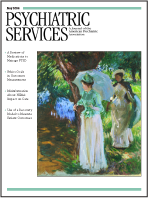Implications of Educating the Public on Mental Illness, Violence, and Stigma
Abstract
This study examined how two types of public education programs influenced how the public perceived persons with mental illness, their potential for violence, and the stigma of mental illness. A total of 161 participants were randomly assigned to one of three programs: one that aimed to combat stigma, one that highlighted the association between violence and psychiatric disorders, and a control group. Participants who completed the education-about-violence program were significantly more likely to report attitudes related to fear and dangerousness, to endorse services that coerced persons into treatment and treated them in segregated areas, to avoid persons with mental illness in social situations, and to be reluctant to help persons with mental illness.



